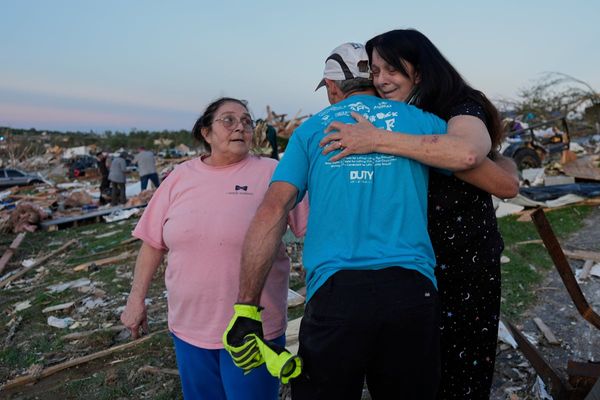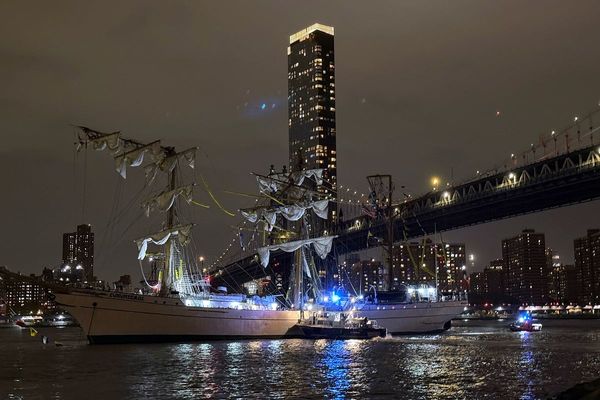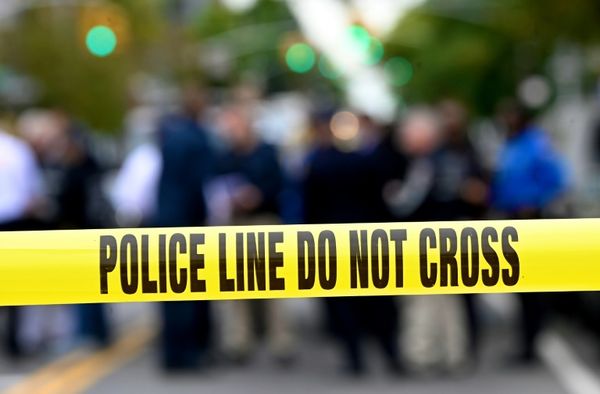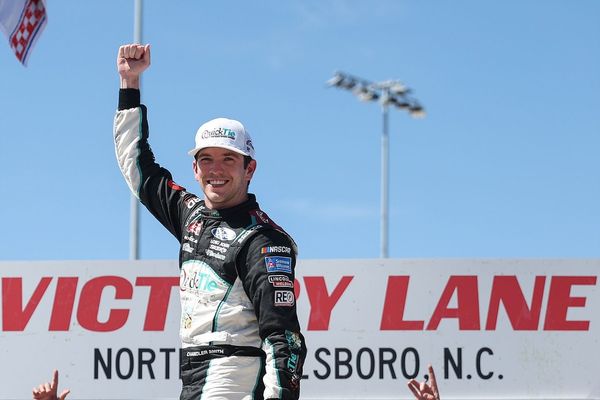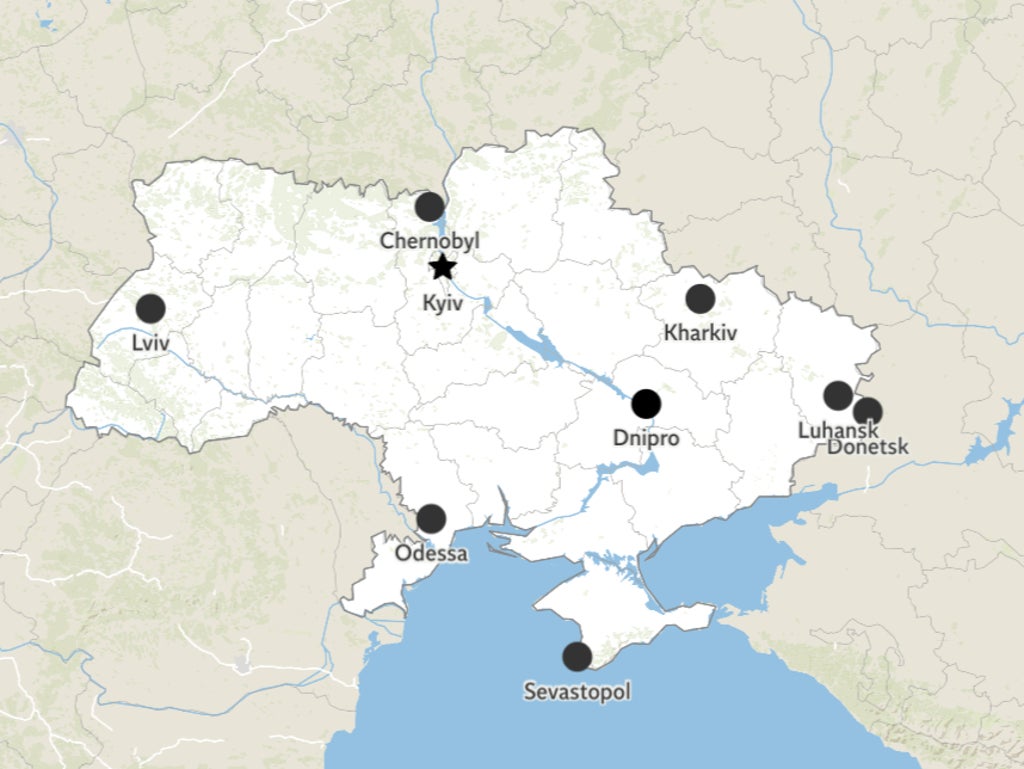
Russia has finally launched its long-feared “full-scale invasion” of Ukraine after Vladimir Putin announced a “special military operation” in a televised address to his citizens in the early hours of Thursday morning.
Explosions were reported soon afterwards on the outskirts of the cities of Kharkiv, Kramatorsk, Mariupol, as well as the capital Kyiv, prompting many Ukrainians to form queues at supermarkets, ATMs and petrol stations in preparation for weathering the siege or attempting to flee.
Ukraine’s airports have been shut down temporarily and secured against potential Russian aircraft landings, while Russia has closed its own airspace around the border to civilian access for the next four months.
Ukrainian president Volodymyr Zelensky said his government has introduced martial law in all territories of the state and urged citizens to stay at home as much as possible.
In the opening skirmishes, Ukraine’s military has said it has destroyed four Russian tanks on a road near the eastern city of Kharkiv, killed 50 troops near a town in Luhansk region and downed a sixth Russian aircraft, also in the country’s east.
According to Mr Zelensky, 137 Ukrainian civilians and soldiers were ultimately killed on the first day of fighting and another 316 injured as he appealed to the international community to do more to help. He pledged to remain in Kyiv as Russian missile strikes began to target the city in the early hours of Friday morning.
US president Joe Biden, UK prime minister Boris Johnson and UN secretary general Antonio Guterres have joined other global powers in condemning Moscow’s “unprovoked and unjustified” attack and promised to hold it “accountable”, with the Western powers subsequently introducing another round of tough economic sanctions against Russian banks and businesses.
Tensions in Eastern Europe have rumbled on since December when Russia stationed an estimated 130,000 soldiers along its western border and then another 30,000 in Belarus, consistently denying it had any attention of making incursions into Ukraine.
Frantic diplomatic negotiations were pursued by the likes of US secretary of state Antony Blinken, French president Emmanuel Macron, German chancellor Olaf Scholz and UK foreign secretary Liz Truss in the hoping of averting calamity but ultimately appear to have come to nothing.
The situation escalated drastically on Monday when Mr Putin moved to officially recognise the pro-Russian breakaway regions of the Donetsk People’s Republic (DPR) and Luhansk People’s Republic (LPR) as independent states, enabling him to shift military resources into those areas in anticipation of the coming assault under the guise of extending protection to allies.
The decision to recognise the self-proclaimed DPR and LPR, which first declared independence in May 2014 and have been engaged in bloody conflict ever since, came after a direct appeal for military and financial aid from their respective leaders, Denis Pushilin and Leonid Pasechnik.
Russia has previously denied accusations from Ukraine and Nato that it had been helping to arm and fund the rebels in a fight that has cost more than 14,000 lives.
The international community immediately hit out at Russia’s calculated chess move, with the United Nations Security Council expressing “great concern”.
Vassily Nebenzia, the Russian ambassador to the UN, insisted there would be no “new bloodbath” in eastern Ukraine but warned the West to “think twice” before making matters worse.
Behind all of this is Mr Putin’s fierce opposition to Ukraine joining Nato in search of greater protection.
He is believed to desire the return of former Soviet satellite states like Ukraine, Georgia and perhaps Belarus, Lithuania, Latvia and Estonia to the embrace of what he still considers to be their motherland, lamenting their independence since the collapse of the USSR in 1989.
The Kremlin leader previously annexed the Crimean Peninsula in 2014 in response to Ukraine voting out his ally Viktor Yanukovych, shrugging off the protests and international condemnation that followed.
Here are two maps to explain Ukraine’s frought situation as the conflict gets underway.
The first shows its borders within continental Europe.
The second details the placement of its cities in relation to the buildup of Russian troops, tanks, armoured vehicles and artillery units, which are currently clustered around the eastern front surrounding the Donbas region of Ukraine where Donetsk and Luhansk are situated.
The Russian military also has a heavy presence in the Crimea and naval forces lurking in the Black Sea.
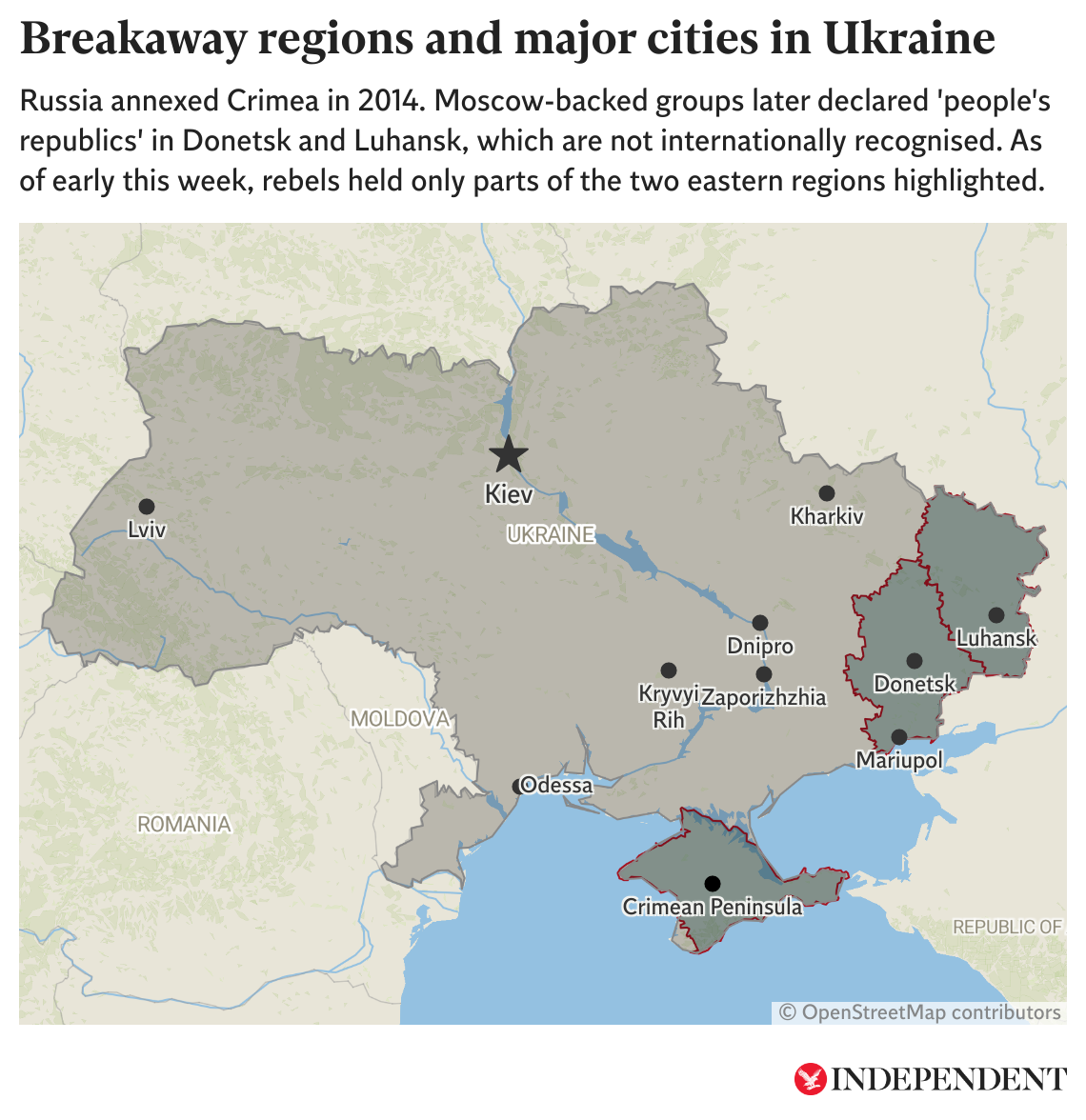
Adding to the gravity of the situation for Ukraine is the significant gulf in military strength between the two combatants.
While Ukraine has under 250,000 troops and is looking to add a further 130,000 to its ranks, Russia has almost a million soldiers at its disposal. It also has much more sophisticated and abundant military hardware.
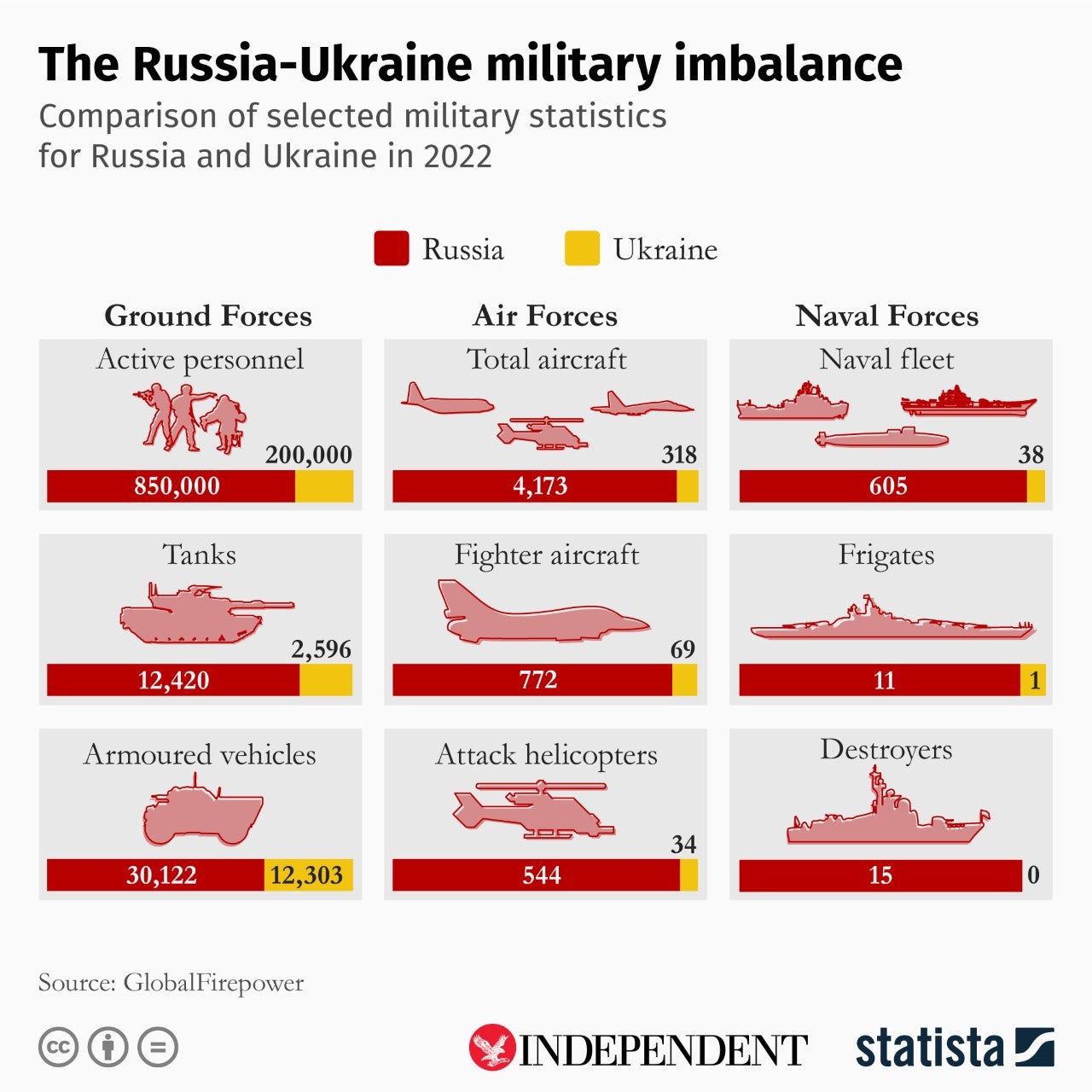
Speaking of the disparity between the two armies, Vadym Prystaiko, Ukraine’s ambassador to the UK, said it is unfortunate that his country is not part of Nato.
“We are not part of this family and we are facing the biggest army in Europe by ourselves,” he said.
